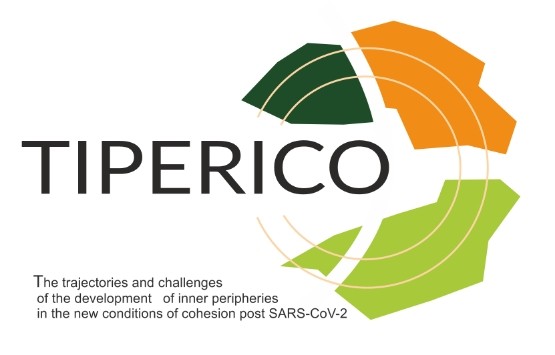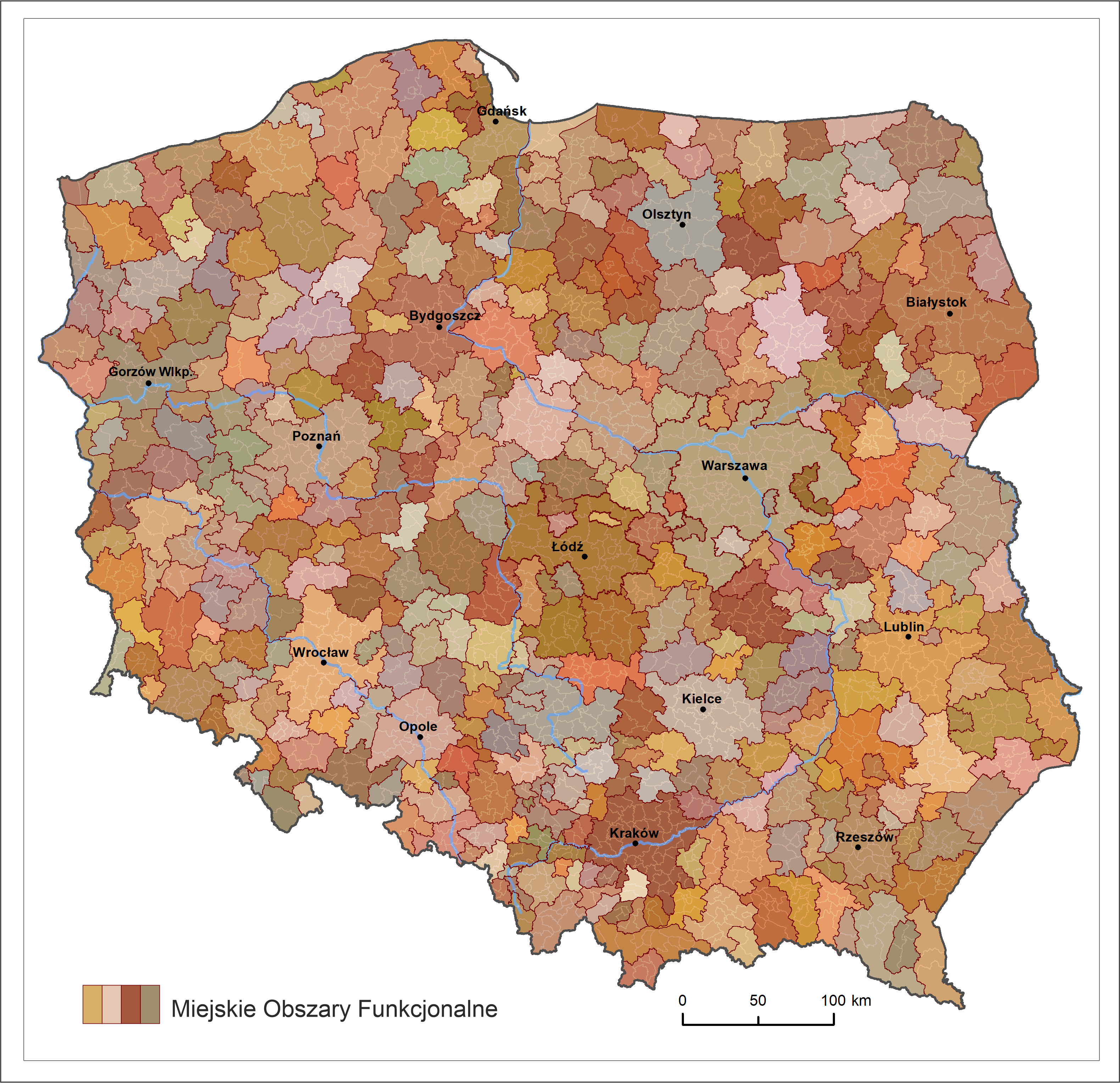Churski, P., Adamiak, C., Szyda, B., Dubownik, A., Pietrzykowski, M., Śleszyński, P. (2023). Nowa delimitacja miejskich obszarów funkcjonalnych w Polsce i jej zastosowanie w praktyce zintegrowanego podejścia terytorialnego (place based approach) [A new delimitation of Functional Urban Areas in Poland and its application in the practice of the place-based approach]. Przegląd Geograficzny, 95(1), 29–55.
DOI: 10.7163/PrzG.2023.1.2
Summary:
Where integrated territorial development is concerned, contemporary regional research and policy is putting increased emphasis on the functional approach, as compared with the administrative approach. Such a change of orientation denotes reference to a functional area (such as a city and its zone of influence) as an object around which analysis and planning can be focused. While relevant Polish discourse on the strategic and spatial-planning system revolves increasingly around the concept of Functional Urban Areas (FUAs, or MOFs in Polish), few studies have attempted to divide the entire territory of Poland into such FUAs. The work detailed in this paper has thus sought to fill the gap through the de novo development of a procedural tool for delimitation that is nevertheless informed by previous studies; as well as through presentation of the results of the method’s application.
The work thus commenced with a review and critical evaluation of Polish literature from the points of view of the conceptualization of Functional Urban Areas and methods used in their delimitation. We outline the use of related concepts involving the so-called Urban Agglomeration, City-region, Functional Urban Region, Metropolitan Area, Functional Urban Area, Local Labour-Market Area and Zone of Urban Influence (Table 1). We then focus on methods employed in researching Functional Urban Areas, identifying four important methodological dichotomies, i.e. (1) regions being defined zonally (by common characteristics) vs. nodally (by relations), and (2) regions developed deductively (by division) or inductively (by aggregation), as well as (3) the application of division that is either exhaustive (all units belong to a group) or non-exhaustive, and (4) classifications that are regional (involving spatially continuous regions) or else typological (Table 2). Summarising our review of the literature, we conclude that FUA delimitation needs to be based around nodal, inductive, exhaustive and regional division principles.
On that basis, our original method of achieving delimitation of FUAs first entailed definition of such a region as a territorially continuous area including a central city or other urban locality and at least one subordinate local-government unit (gmina in Polish) connected to it by virtue of population flows (commutes to work and bidirectional migration) and located within the isochrone of 1 (or for the largest cities – 1.5) hours of travel to the central locality. A modified highest flow linkages method was used to allocate each gmina to an FUA, with use made of a commuting-to-work matrix (calculating the mean from Nowa delimitacja miejskich obszarów funkcjonalnych w Polsce i jej zastosowanie w praktyce... 55 the 2011 and 2016 commuting matrices from Statistics Poland) and an inter-municipal migration matrix (aggregating the 2011‑2020 migration matrices from Statistics Poland) as sources of information by which to assess functional relationships between gminas and potential central cities. The criterion of the maximum time separating a gmina and a central locality was then added in, a 1-hour isochrone being regarded as the limit of convenient single-day travel time to work, services or school, albeit extended to 1.5 hours for cities with more than 500,000 inhabitants. The Google Maps Distance Matrix API was used to determine distances, by reference to actual travel times accounting for road traffic. The delimitation procedure was completed as correction was applied to determine the spatial continuity of each FUA.
This procedure generated 413 FUAs (Fig. 2), each of between 2 and 92 gminas, and with areas ranging from 14 and 8800 km2 and populations of between 7500 and 3.3 million. The largest FUAs relate to the largest regional capitals in Poland, while the smallest involve small towns in regional peripheries. The number of FUAs, their average size, and the list of cities that emerged as FUA central localities bear some similarity with Poland’s second- (county-) level administrative division based on the unit known as the powiat. However, the main feature distinguishing the division into FUAs from the administrative division actually applied in the country concerns the huge size-range of individual FUAs, which generally correlate with the sizes of their central localities. In contrast, powiats as actually established are of rather similar size, regardless of the dimensions of their capitals.
Indeed, the novelty of our means of delimiting Functional Urban Areas stems from its lack of regard for existing administrative boundaries at the level of the powiat or voivodeship (province-region), its exhaustive nature, the core reference to functional linkage, and the operability of the division into regions as founded in an integrated territorial approach. Our delimitation was developed to determine differences in spatial development, and to point to areas faced with specific challenges, including on account of their constituting internal peripheries. Internal peripherality is a complex, multifaceted phenomenon that intensifies the effects of various socio-economic processes resulting in the limitation of functional links.
The authors also intend for the proposed delimitation to serve as a point of reference for various types of analyses and studies, of both an academic and an applied nature. A serious problem for contemporary research is that established territorial units do not typically constitute “functional wholes” playing host to interrelated socio-economic activity. In contrast, our proposed means of delimitation allows for these by aggregating data from Polish gminas to the designated FUA level, and by providing authentic reference areas on which research can be focused.
Article full text: https://rcin.org.pl/igipz/dlibra/publication/274316/edition/238507/content
Table with assignment of gminas to FUAs: https://rcin.org.pl/igipz/dlibra/publication/274317/edition/238508/content
Detailed map of FUA borders on top of administrative division: graphic attachment.
Interactive map of FUA borders: https://www.home.umk.pl/~czeslaw/mofy/.




